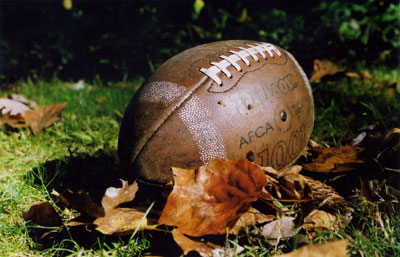All Nonfiction
- Bullying
- Books
- Academic
- Author Interviews
- Celebrity interviews
- College Articles
- College Essays
- Educator of the Year
- Heroes
- Interviews
- Memoir
- Personal Experience
- Sports
- Travel & Culture
All Opinions
- Bullying
- Current Events / Politics
- Discrimination
- Drugs / Alcohol / Smoking
- Entertainment / Celebrities
- Environment
- Love / Relationships
- Movies / Music / TV
- Pop Culture / Trends
- School / College
- Social Issues / Civics
- Spirituality / Religion
- Sports / Hobbies
All Hot Topics
- Bullying
- Community Service
- Environment
- Health
- Letters to the Editor
- Pride & Prejudice
- What Matters
- Back
Summer Guide
- Program Links
- Program Reviews
- Back
College Guide
- College Links
- College Reviews
- College Essays
- College Articles
- Back
Paid at the Collegiate Level
All people want to be recognized and rewarded for their hard work, including those who play football. As a result of this country’s passion for sports, both college football and the professional National Football League generate billions in revenue. Football players on the professional level are paid generous, multi-million salaries. However, a top collegian football athlete receives no additional compensation beyond his scholarship, and some receive no scholarships. Vince Lombardi once said, “Football is like life - it requires perseverance, self-denial, hard work, sacrifice, dedication and respect for authority.” This quote applies to all football players, so how can there be such a drastic difference in pay when the jobs are so similar? Therefore, in addition to their scholarship, college football athletes should receive additional money as compensation for their efforts in producing large sums of profits for their universities.
Top collegiate athletes are icons and produce millions of revenue for their university through donors and advertising. A successful football program increases a school’s visibility at a national level. The college football playoff system features the nation’s top four teams, who compete for the national championship. ESPN reported that the amount of viewers “probably topped 33 million” (Schilken). By playing in these games, the university exposes and advertises its name to over 30 million people across the United States. This exposure increases awareness and highlights the university to potential students. Although the benefits of such advertising remain clear, the players who helped to create it were not paid. Furthermore, the nation’s 244 major college football programs showed a “combined revenue of $3.6 billion in the 2012-13 school year, and a combined profit of $1.3 billion” (College Football). Major football schools such as Ohio State and Alabama generated “profits totaling $31,295,680 and $33,050,145, respectively” (Berkowitz). Through bowl winnings, apparel sales, ticket sales, and television contracts, these schools receive millions. Yet for these college football players, the value of their annual scholarship represented “less than 1% of the program’s profits” (Berkowitz). Moreover, a successful football program increases contributions from donors and alumni. While Johnny Manziel, a popular recent collegian athlete, attended Texas A&M, the school raised, “$740 million Alumni donations at Texas A&M University--a record--in 2012-13, the year star quarterback Johnny Manziel won the Heisman Trophy,” (Majerol). This player’s undervalued success attracted millions of alumni and generated generous donations to his school. College football athletes allow their schools to prosper and accumulate followers. For all that they do, these athletes deserve to be paid. Right?
On the contrary, people who oppose paying college football athletes make the argument that, “there is no system of payment that can be put in place that is fair across the board to all students, all sports, and all schools that participate in college athletics,” (Johnson). These individuals argue that there cannot be a set salary or method of payment due to the all the factors that go into college football. Whether the player is in division one, two, or three, attends or does not attend a major football program school, or plays a pivotal position on the field, there is no way to pay them equally. Though this is a valid point, no one said that there had to be a set method of payment across college football; but rather, there should be a method that compensates the players for what they produce on the field. In the NFL, players are paid a set salary, because it’s their job, and in addition their contract also includes incentives to produce above their team’s expectations on the field. For example, Darren McFadden, a current NFL running back that plays for the Dallas Cowboys, signed a contract in 2015 that stated, “1,000 rushing yards: $300,000; 1,200 rushing yards: additional $250,000,” (The Players). This motivates the players to put forth their best effort, which ultimately makes their team better. College football programs should consider a payment system similar to this one. They should not pay the players a set salary, but they should set aside incentives to make their players play their very best. All in all, the players would try to reach these incentives and in doing so, they would make their team better, attract national attention, and build up revenue for their respective schools.
University awareness, higher ticket sales, bowl winnings, a larger fan base, and alumni donations. Without college football players, these things would be difficult to achieve for many colleges across the nation. College football players are underappreciated and deserve to be paid for all that they do for their schools. Everyone wants to earn what they are worth, so college football players across the nation should begin to be recognized and rewarded for their efforts on the field.

Similar Articles
JOIN THE DISCUSSION
This article has 0 comments.

people will recognize the importance of college football atheletes and what they do for their respective schools